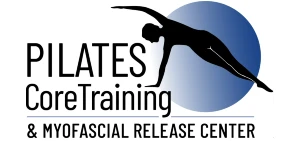One of my long time Pilates clients went in to see her physician for a routine check-up. She is in good health, is fit and looks great. After she informed her doctor that she does Pilates exercises on the equipment weekly, he mentioned to her that she should be getting some resistance exercise as well. I had to ask myself why this doctor doesn’t know that Pilates IS resistance training. And why is there still so much confusion about what Pilates is? One of my missions since bringing Pilates to Pensacola over ten years ago was education. I see that I still have work to do.
Confusion reins over the definition of Pilates due to the varied states of schools in the industry. To understand this I will try to cover a century of Pilates history as briefly as possible. Joseph Pilates was born in Germany in 1880. He was frail with asthma and rickets and treated harshly by other kids. To overcome this, he studied martial arts, boxing and gymnastics. He soon developed his own style of exercising and during his early adulthood worked on injured war victims during World War I. Later he immigrated to the United States and took up residence in NYC. Due to the close proximity to the entertainment world, dancers such as Martha Grahm and Geoge Ballentine soon discovered Joseph Pilates. At the time he called his work “Contrology”. Word spread to other dancers that he could help them to recover from injuries. There was no physical therapy back then to speak of. Joseph continued his work until he died at the age of 83.
In the 1990s, a second generation student began suing Pilates studios nationwide saying that Pilates had given him sole permission to teach his technique. After being challenged in court, the word Pilates became a generic term. This was good and bad news. Good because people could freely practice and teach Pilates yet bad because it meant it allowed fly-by-night schools to offer weekend certifications, internet certifi¬cations, etc. Pilates historically is taught by a Pilates teacher who has at least 10 years experience. It takes about a year to complete a course and like any other skill takes a few more years to become highly skilled. So, from the not-so-well-taught instructors and the students they teach emanates the mis-information.
Today, only the PMA can issue certifications and Pilates schools can issue di¬plomas. Certifications are only issued to a comprehensively trained instructor. It is still not mandatory but soon will be. So consumer beware is still the best course of action.
Pilates is Not…
- just stretching
- just good core work
- simple
- just some choreographed callisthenics performed on a mat at your gym
- something one learns in a weekend
- learned from a book, over the internet, or from a video
Pilates Is…
- exercise that emphasizes perfect skeletal alignment to place the joints (vertebra included) in the most stress-free position possible
- exercise that creates a more efficient gait – this mean playing tennis with less
- fatigue and risk of injuries (ever pull a calf muscle on the court?)
- exercise where all moves are core initiated, so that your legs and arms are
- strengthened to support the natural curves of the spine.
- exercise gives you a flat belly and lifted backside (because it is anatomically
- correct!)exercise that greatly improves your sports performance
- Most of the equipment utilizes springs as resistance. The benefit of this is that as the springs recoil there is an increased benefit of eccentric load on the muscles (oth¬erwise known as negatives.) This is where the muscle elongates as an increased load is placed on it and it highly effective in strengthening muscle. The springs create a control and coordination unmatched by standard weight lifting.
